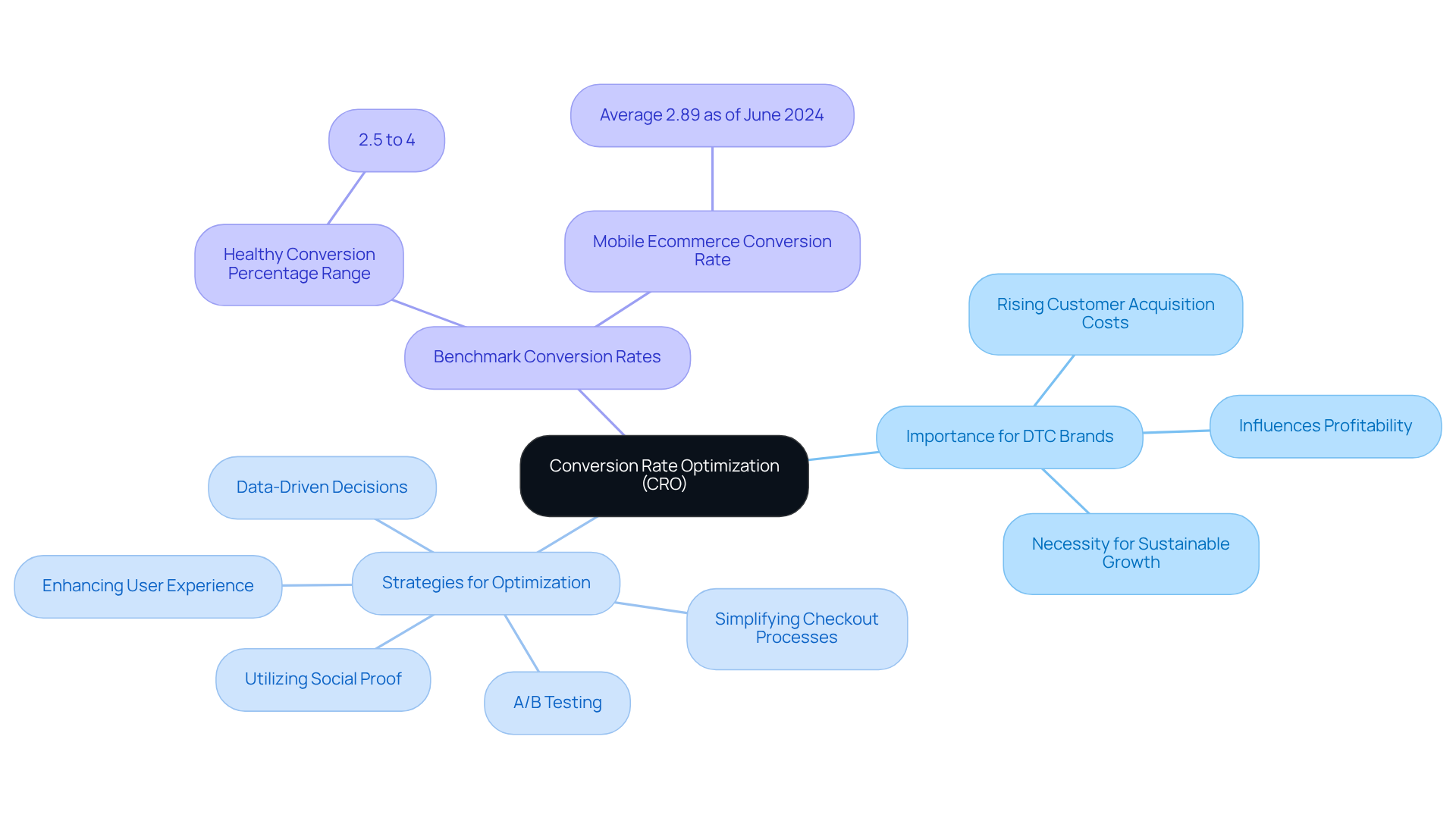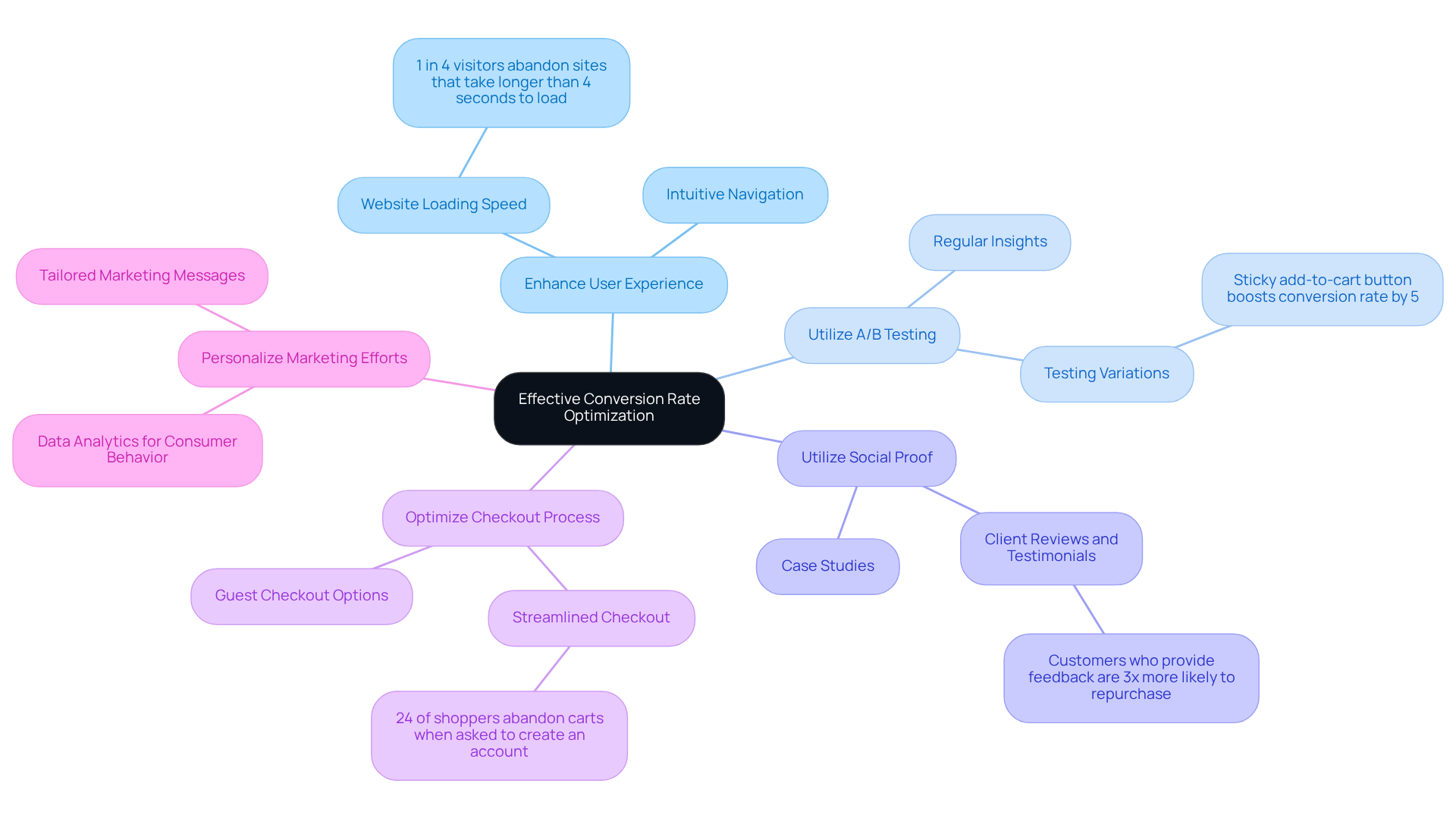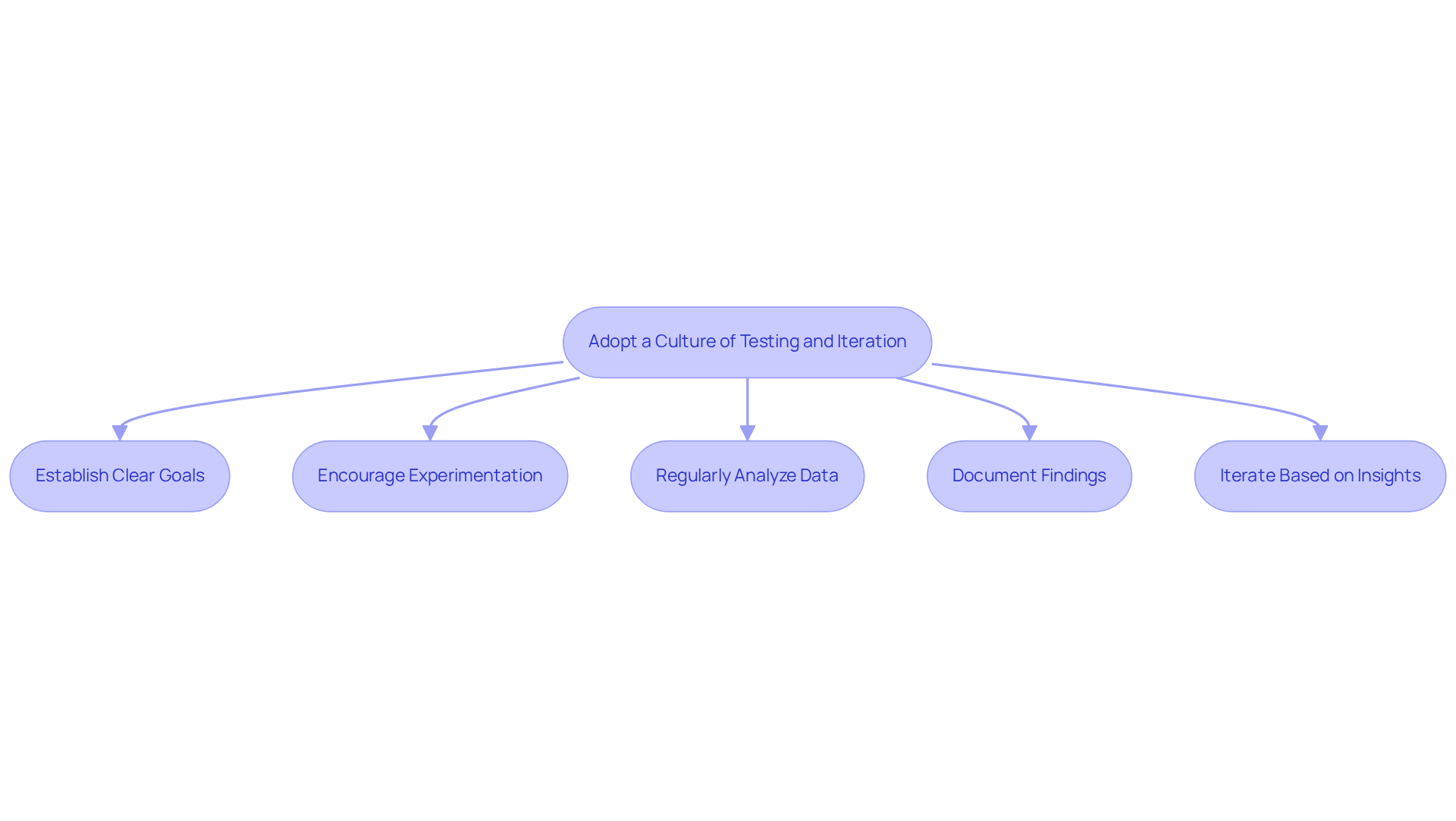
Overview
This article delineates five proven strategies for optimizing conversion rates in Direct-to-Consumer (DTC) brands. It underscores the critical importance of:
- Enhancing user experience
- Utilizing A/B testing
- Leveraging social proof
- Optimizing the checkout process
- Personalizing marketing efforts
Each strategy is substantiated by data and research, illustrating how these practices can significantly elevate conversion rates and ultimately drive profitability for DTC companies in a competitive market.
Introduction
Marketing conversion rate optimization (CRO) is a critical pillar for Direct-to-Consumer (DTC) brands, profoundly influencing both profitability and the overall customer experience. With acquisition costs continuing to escalate, the necessity of converting existing traffic into loyal customers has never been more pressing. This article explores five proven strategies designed to significantly enhance conversion rates, providing DTC brands with actionable insights essential for thriving in a competitive landscape.
How can these brands adeptly navigate the complexities of consumer behavior and technological advancements to unlock their true potential?
Define Conversion Rate Optimization and Its Importance for DTC Brands
Marketing conversion rate optimization (CRO) is a systematic process aimed at increasing the percentage of website visitors who undertake a desired action, such as making a purchase or signing up for a newsletter. For Direct-to-Consumer (DTC) companies, effective marketing conversion rate optimization is essential, as it directly influences profitability and revenue generation. Given the rising costs of client acquisition, marketing conversion rate optimization of existing traffic is now a necessity, not just an option.
Parah Group, recognized as an expert CRO agency, emphasizes marketing conversion rate optimization along with sustainable growth and profitability by implementing strategies that not only enhance user experience but also streamline the purchasing process. By leveraging data-driven decisions, companies can enhance their marketing conversion rate optimization to convert a higher number of visitors into loyal customers.
Generally, a healthy conversion percentage for DTC companies ranges from 2.5% to 4%, varying by sector and target demographic. Understanding these benchmarks allows companies to set achievable objectives and assess their success efficiently, ensuring they remain on the path to marketing conversion rate optimization and sustainable profitability.

Implement Proven Strategies for Effective Conversion Rate Optimization
To effectively optimize conversion rates, DTC brands must implement the following strategies:
-
Enhance User Experience: A user-friendly website featuring intuitive navigation and rapid loading times is essential. Research indicates that 1 in 4 visitors abandon sites that take longer than 4 seconds to load. A seamless user experience not only reduces bounce rates but also encourages visitors to explore further, ultimately contributing to marketing conversion rate optimization.
-
Utilize A/B Testing: Regularly testing different versions of website elements—such as headlines, images, and call-to-action buttons—can yield significant insights. A/B testing empowers brands to identify which variations resonate most effectively with their audience, resulting in enhanced user engagement and contributing to marketing conversion rate optimization. For instance, implementing a sticky add-to-cart button has been shown to boost conversion rates by 5%.
-
Utilize Social Proof: Incorporating client reviews, testimonials, and case studies on product pages fosters trust and can profoundly influence buying decisions. Brands that prominently display positive feedback often find that clients who provide reviews are three times more likely to repurchase, thereby enhancing overall loyalty.
-
Optimize Checkout Process: Streamlining the checkout process is crucial for minimizing cart abandonment. Offering guest checkout options and various payment methods can significantly enhance the experience. Notably, 24% of shoppers abandon their carts when prompted to create an account, underscoring the necessity of reducing friction during checkout.
-
Personalize Marketing Efforts: Leveraging data analytics to comprehend consumer behavior and preferences allows companies to tailor marketing messages and product suggestions. Personalized experiences can lead to higher engagement and marketing conversion rate optimization, as customers are more inclined to respond positively to offers that align with their interests and past behaviors.

Adopt a Culture of Testing and Iteration for Ongoing Optimization
Establishing a culture of testing and iteration is essential for DTC companies seeking to maintain a competitive edge. To achieve this, it is crucial to adopt key practices that can significantly enhance your conversion rate optimization (CRO) efforts.
-
Establish Clear Goals: Define what success looks like for your CRO initiatives. Set measurable objectives that align with your overall business goals. This clarity ensures that all efforts are directed towards tangible outcomes, ultimately leading to a high return on investment (ROI).
-
Encourage Experimentation: Foster an environment where team members feel empowered to propose and test new ideas. Promote creativity and innovation in your optimization strategies. Many DTC companies often over-focus on bottom-of-funnel tactics while under-investing in awareness and consideration. A holistic approach to CRO not only focuses on immediate conversions but also on long-term brand growth.
-
Regularly Analyze Data: Utilize analytics tools to track user behavior and conversion metrics. Regular analysis helps identify trends and areas for improvement. Emphasizing structured testing plans and clear feedback loops is essential for effective CRO. This data-driven approach ensures that your strategies are informed by real user insights, maximizing profitability and demonstrating the high ROI of CRO initiatives.
-
Document Findings: Keep a record of all tests conducted, including hypotheses, results, and insights gained. This documentation can inform future strategies and prevent repeated mistakes. With the shift towards leveraging first-party data, maintaining clean, actionable data is crucial for optimizing your CRO process and driving sustainable growth.
-
Iterate Based on Insights: Use the data collected from tests to refine your strategies continually. Adapt and evolve your approach based on what works best for your audience, ensuring that your CRO efforts remain relevant and effective. By acting as growth consultants, you can maximize your existing resources through high-velocity testing, aligning your paid ads and landing pages to drive significant growth.

Conclusion
Marketing conversion rate optimization (CRO) is essential for the success of Direct-to-Consumer (DTC) brands, profoundly influencing profitability and customer loyalty. By executing effective strategies that enhance user experience, leverage A/B testing, incorporate social proof, streamline the checkout process, and personalize marketing efforts, brands can significantly elevate their conversion rates. The focus on data-driven decisions and ongoing optimization guarantees that these companies remain competitive in a swiftly evolving market.
This article presents five proven strategies for optimizing conversion rates, underscoring the significance of a user-friendly website, the impact of testing, and the importance of customer feedback. Moreover, cultivating a culture of experimentation and consistent data analysis empowers DTC brands to adapt and refine their strategies continually, ensuring that their marketing efforts deliver the highest possible return on investment. Establishing clear objectives and documenting insights further amplifies the effectiveness of these strategies.
Ultimately, the importance of conversion rate optimization cannot be overstated. DTC brands must acknowledge that optimizing existing traffic is not merely an option but a fundamental necessity for sustainable growth. By adopting a mindset of testing and iteration, companies can not only enhance their conversion rates but also forge enduring relationships with their customers, driving long-term success in an increasingly competitive landscape.
Frequently Asked Questions
What is Conversion Rate Optimization (CRO)?
Conversion Rate Optimization (CRO) is a systematic process aimed at increasing the percentage of website visitors who take a desired action, such as making a purchase or signing up for a newsletter.
Why is CRO important for Direct-to-Consumer (DTC) brands?
CRO is essential for DTC brands because it directly influences profitability and revenue generation. As client acquisition costs rise, optimizing existing traffic through CRO becomes a necessity for financial sustainability.
What strategies do experts recommend for effective CRO?
Experts recommend implementing strategies that enhance user experience and streamline the purchasing process, while leveraging data-driven decisions to convert more visitors into loyal customers.
What is a healthy conversion percentage for DTC companies?
A healthy conversion percentage for DTC companies typically ranges from 2.5% to 4%, depending on the sector and target demographic.
How can DTC companies assess their success in CRO?
DTC companies can assess their success in CRO by understanding benchmark conversion rates and setting achievable objectives, which helps ensure they remain on the path to sustainable profitability.
FAQs











